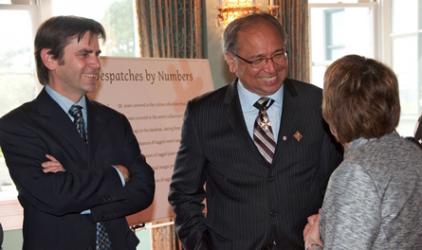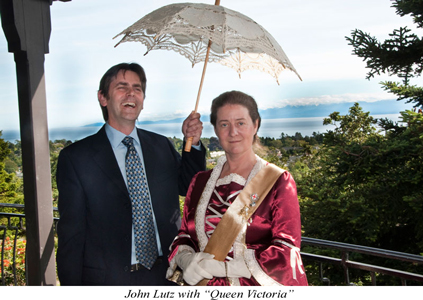Colonial Despatches and Teaching Canadian History (John Lutz)

What is a Despatch? Nothing less than the lifeline by which Britain governed its vast empire. Colonial Despatches are the correspondence through which the Colonial Office in London instructed its colonial governors all over the world, and by which the governors reported back. The Despatches are not the dry, guarded and politically-correct documents which characterize much of today’s government correspondence. Here are adventures and exploration, financial windfalls and disasters, conflicts, smuggling, murder, and diplomacy pushed to the verge of war. So the Despatches offer a rich source of primary documents and an engaging opportunity to draw students into that lost world.
A recent project involving the Library and the Humanities Computing and Media Centre at the University of Victoria (UVic) has embarked on a digital publication of the Despatches between the colonies of British Columbia and Vancouver Island and the Colonial Office. At the moment the Colonial Despatches from 1846 to the 1858 gold rush are available online and we plan to complete the series to when BC joined Confederation in 1871.
Taking advantage of the new on-line availability of these Despatches, UVic approached the BC Treaty Commission to support the creation of four curriculum challenges for grades 5 to 10 across Canada.
Combining the premise of UVic’s Great Unsolved Mysteries in Canadian History project — that everyone likes to solve a puzzle — with the critical thinking models devised by The Critical Thinking Consortium (TC2), who took charge of the lesson plans, we have created and are launching “ready to use” curriculum challenges, complete with lesson plans and support material for teachers, in both French and English, on The Governor’s Letters website.
The support material has much broader use. The three skill sets – Reading Around a Document, Judging the Credibility of Primary Accounts, and Exploring the Author’s Mindset – can be applied to any historical documents and are supported with stand-alone exercises.
Using the Despatches, as well as other primary sources including maps, paintings, and photographs, students are invited to solve these and related puzzles while building their historical thinking skills.
Each of the four challenges is posed as a puzzle to solve, and is designed to engage students in historical thinking based on the analysis of evidence. For example, one challenge asks about the fairness of treaty making and compares the BC “Douglas” treaties with the numbered treaties on the prairies. Teachers can easily add in comparisons to treaties or pacts of friendship signed in other parts of Canada. The other three challenges focus on British Columbia but in ways designed to fit into curricula in all provinces. The four challenges are:
- What Were the Real Reasons for Creating the Colony of British Columbia?
- Were the Douglas Treaties and the Numbered Treaties Fairly Negotiated?
- Did the Gold Rush Radically Change Daily Life in Victoria?
- Did Governor James Douglas Deserve to be Knighted?
Teachers who wish to up the challenge level can explore the full set of Despatches as well as over 200 maps from the Colonial Archives in London relating to BC. If they like posing problems to their students they should also explore the Mysteryquests website which takes a similar approach to the historical documents in the Great Unsolved Mysteries in Canadian History series but in bite size pieces linked to grades 5 to 12 curriculum.
 Such a rich project depends on a team to create it. The teacher support material was written by Lindsay Gibson, and edited by Roland Case, both of TC2, and myself, with research help from Jenny Clayton and translation by Françoise McNeil. Funding came from the British Columbia Treaty Commission and the National Archives of Canada using funds provided by the Department of Canadian Heritage. The Despatches project built on the transcription work of Dr. James Hendrickson and involved a much larger team who can all be found on the Colonial Despatches website.
Such a rich project depends on a team to create it. The teacher support material was written by Lindsay Gibson, and edited by Roland Case, both of TC2, and myself, with research help from Jenny Clayton and translation by Françoise McNeil. Funding came from the British Columbia Treaty Commission and the National Archives of Canada using funds provided by the Department of Canadian Heritage. The Despatches project built on the transcription work of Dr. James Hendrickson and involved a much larger team who can all be found on the Colonial Despatches website.

